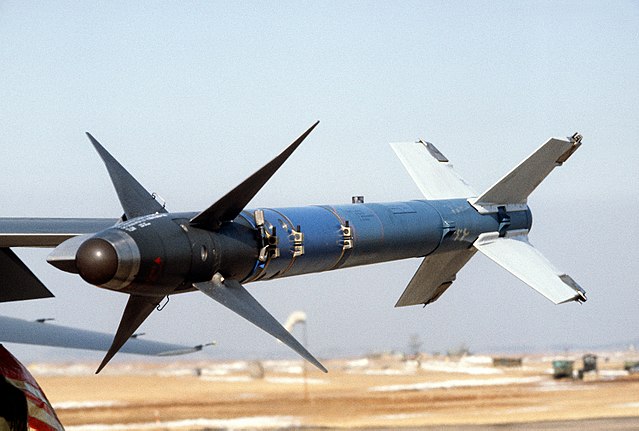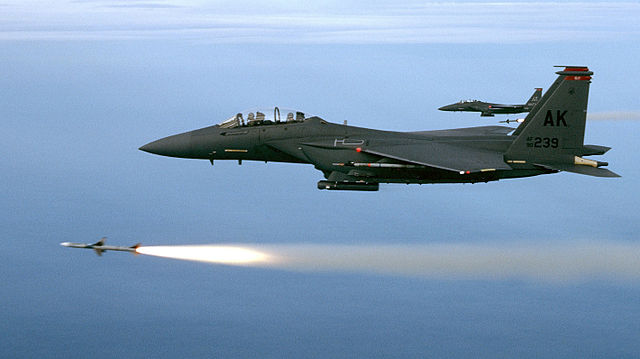The AIM-9 Sidewinder is a short-range air-to-air missile. Entering service with the United States Navy in 1956 and the Air Force in 1964, the AIM-9 is one of the oldest, cheapest, and most successful air-to-air missiles. Its latest variants remain standard equipment in most Western-aligned air forces. The Soviet K-13, a reverse-engineered copy of the AIM-9B, was also widely adopted.
AIM-9L
Prototype Sidewinder-1 missile on an AD-4 Skyraider during flight testing at NAWS China Lake, 1952
AIM-9L Captive air training missile with part/section in blue color, denoting inert warhead and rocket motor, for training purposes.
A sailor removing the arming pin from an AIM-9X mounted on the wingtip of a US Navy F/A-18C Hornet in 2004
An air-to-air missile (AAM) is a missile fired from an aircraft for the purpose of destroying another aircraft. AAMs are typically powered by one or more rocket motors, usually solid fueled but sometimes liquid fueled. Ramjet engines, as used on the Meteor, are emerging as propulsion that will enable future medium- to long-range missiles to maintain higher average speed across their engagement envelope.
A USAF F-22 fires an AIM-120 AMRAAM
Two F-15Es from the 90th Fighter Squadron USAF, from Elmendorf Air Force Base, Alaska, fire a pair of AIM-7Ms during a training mission.
Meteor (missile) for Saab 39 Gripen, Dassault Rafale and Eurofighter Typhoon fighter jets.
R-37M at 2013 MAKS Airshow.








